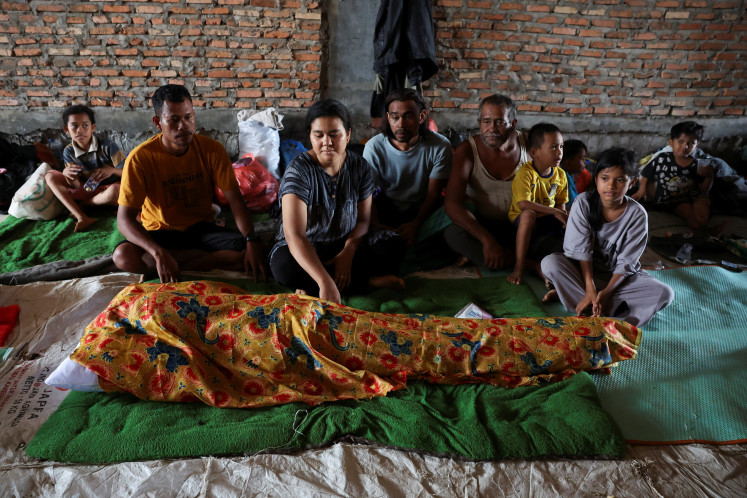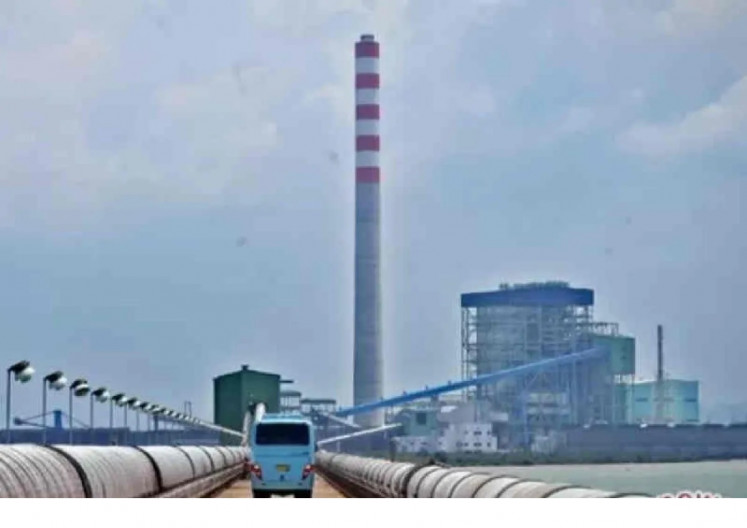Popular Reads
Top Results
Can't find what you're looking for?
View all search resultsPopular Reads
Top Results
Can't find what you're looking for?
View all search resultsBid to smooth the economic cycles
Among the most vulnerable in the current recession are the poor, and especially the poor in developing countries
Change text size
Gift Premium Articles
to Anyone
Among the most vulnerable in the current recession are the poor, and especially the poor in developing countries. As people in the developed world worry, quite rightly, about job security, how to get a loan for a new car or house and paying the bills every month, millions of people in poorer countries risk sliding even further into extreme poverty.
For them, even basics such as getting enough food and having a simple shelter from the elements is likely to be out of reach. It is therefore hardly surprising that the Secretary-General of the United Nations, Ban Ki-moon warned again recently that immediate action is needed to protect people, jobs, shelter and livelihoods in developing countries and called for a redoubling of commitments to meeting the UN’s Millennium Development Goals.
The current economic crisis has, and will, continue to highlight the vulnerability of the hundreds of millions of people who live in poverty and the need for concerted action. Clearly, there are structural issues that need to be addressed with urgency. Clearly, help from those better off is desperately needed and would be very welcomed. What is also true, however, is that alleviating poverty is an individual responsibility and no more so than for the people to which it matters the most: The poor in developing countries themselves.
There is no clearer illustration of this self-empowerment than the globalization of labor. In 2005, there were some 200 million people around the world who were living and working outside their home countries, according to the World Bank. That’s about one in every 30 people on the planet. Most of these are people who, lacking the opportunities formeaningful employment at home, have taken action to realize better lives for themselves and their families.
In 2008, documented money remittances – the money sent back by migrant workers working around the world -- were estimated to reach $283 billion. A large part of this comprises funds sent by overseas workers to their families back home. In fact, money remittances to developing countries now exceed both official development assistance and foreign direct investment.
According to Indonesia’s Central Bank, remittances to Indonesia were US$5.6 billion in 2007.
This is slightly more than half of the total foreign direct investments that flowed into the country in the same period.
One would assume that the billions of dollars being sent home would have a significant effect on lifting communities out of poverty. Unfortunately, things are not that simple. According to a recent study co-held by the Economist Intelligence Unit and the Western Union, remittances from foreign workers are going mainly towards individual consumption – to pay for housing and food and education.
Although this kind of spending does have a knock-on effect on local economy, the study found that a lot more could be achieved if more migrant dollars went directly to raising long-term productive power of communities through sustainable projects. If migrant dollars are to make a real impact on helping to alleviate poverty, then we must move beyond the economics of individuals and families and look at whole villages, towns and cities. One way to achieve this is for migrant workers to pool funds into collective remittances for the benefit of their home communities.
Already, there are several examples of how remittances are being used to help drive long-term development. One such example is the “Four plus One” program begun in Zacatecas, Mexico in 2005 . Under this program, for each dollar that migrants put in a fund, the federal, state and local governments in Mexico contribute three dollars more, with Western Union adding another dollar. So far, $5 million has gone to creating thousands of jobs in agriculture, tourism, IT and other industries in four Mexican states.
Another collective remittance success is in Pozorrubio, the Philippines. With the help of local leaders, migrant workers and their families formed organized groups to pool remittance money for infrastructure projects such as sidewalk light posts, a park, a library and enhancements to schools and hospitals.
The practice of collective remittances, however, is not widespread and could make a real difference if it were. According to the Economist Intelligence Unit study, keys to promoting greater adoption of collective remittances are the ability of migrants and their families to form organized groups, the ability to identify appropriate projects, successful project coordination, the capacity to carry out projects on a sustained basis, effective leadership and support from governments, migrant associations and NGOs.
With so many factors involved, collective remittances are not an easy solution, and much work is needed to bring people together, to align interests and to see the possibilities realized. That is why there is an urgent need for stakeholders to develop a viable solution to make collective remittances successful.
We often think of poverty alleviation as a charitable pursuit. We hear the voices of donors and the people and organizations working to make a difference. Those being helped, however, remain largely mute.
Most migrant workers are hard-working people actively improving their lives, people who have made sacrifices and gone to distant lands, to pursue ambitions and dreams for a better life.
They do not simply ask for our generosity and good will. Instead, what they would rather have for their home communities are tools they can use to help them break out of the cycle of poverty.
It is also important to note that on from a historical perspective, remittances have proved to be more dependable and resilient than other forms of capital flowing to developing countries.
Although remittances are expected to fall in 2008 as the result of the current global economic slowdown, the decline will be smaller than that of private or official capital flows to the developing world.
With increasing hardship and tightening financial resources everywhere, there is no better time to try to leverage the huge power of migrant worker dollars and to make these funds work to support long-term economic growth in communities.
The writer is Regional Vice President, Asia Pacific Corporate Affairs, The Western Union Company.










